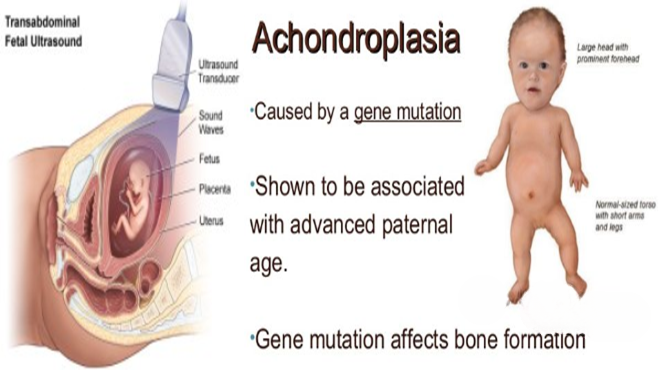Understanding Achondroplasia: Causes, Symptoms, and Diagnosis | Comprehensive Guide– Achondroplasia, a rare bone growth disorder, presents unique challenges to those affected and their families. In this comprehensive guide, we’ll delve into the intricacies of Achondroplasia, exploring its causes, symptoms, diagnosis, treatments, complications, and preventive measures. Whether you’re seeking information for personal understanding or supporting someone with this condition, this article aims to provide clarity and awareness.
Understanding Achondroplasia: Causes, Symptoms, and Diagnosis | Comprehensive Guide

Summary
Achondroplasia is a genetic disorder causing disproportionate dwarfism, where certain body parts are small while others remain of average or above-average size. Primarily caused by mutations in the FGFR3 gene, this condition is often present at birth. Recognizable symptoms include short arms and legs, an enlarged head, and a normal-sized torso. Diagnosis can be made during pregnancy or after birth through techniques like ultrasound and genetic testing.
Facts
- Achondroplasia is a lifelong condition with no known cure.
- Diagnosed by medical professionals through lab tests and imaging.
- Family history may increase the likelihood of the condition.
Symptoms: Characteristic and Common
- Short arms and legs, enlarged head, and average-sized torso.
- Physical deformities, short stature, bowlegs, and hunched back.
- Associated problems include back pain, ear infections, misaligned teeth, and snoring.
Causes and Risk Factors
- Caused by mutations in the FGFR3 gene affecting bone development.
- Often spontaneous, but hereditary in some cases.
Diagnosis: Common Methods
- Ultrasound during pregnancy to detect achondroplasia characteristics.
- Genetic testing using amniotic fluid or blood samples.
- X-rays to measure the length of an infant’s bones.
Treatments: Commonly Recommended and in Severe Cases
- No cure, but treatments help manage complications.
- Medications like antibiotics for ear infections.
- Growth hormone therapy for children to boost bone growth.
- Surgery, such as laminectomy, for severe spinal stenosis.
Complications
- Possible complications include hearing loss, bowed legs, sleep apnea, and spinal stenosis.
- Delay in motor skill development and respiratory problems in pregnant women.
Prevention
- No known preventive measures.
Questions To Ask Your Doctor
- Do we need to see any specific specialists?
- What complications are associated with my child’s condition?
- What are the monitoring techniques for my child’s health and development?
Conclusion
Achondroplasia poses unique challenges, but understanding its causes, symptoms, and available treatments can significantly improve the quality of life for those affected. With ongoing research and medical advancements, the hope is to continue enhancing support systems and improving the overall well-being of individuals living with Achondroplasia. If you suspect this condition or have concerns, consult with a healthcare professional for personalized guidance and support.
Disclaimer-For informational purposes only. Consult a medical professional for advice.
ALSO READ-Understanding Achilles Tendinitis: Causes, Symptoms, and Diagnosis | Comprehensive Guide